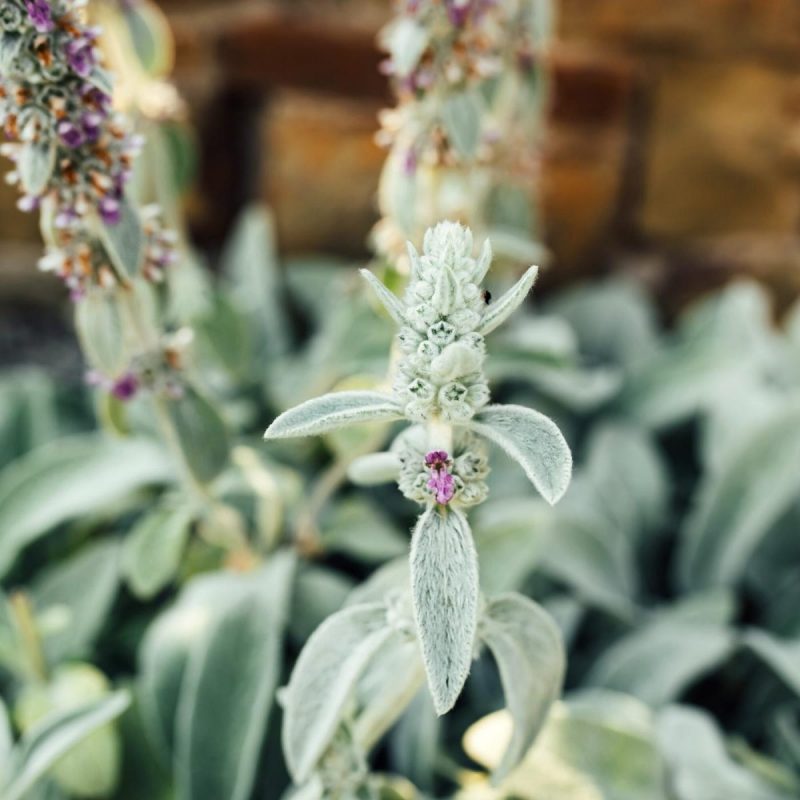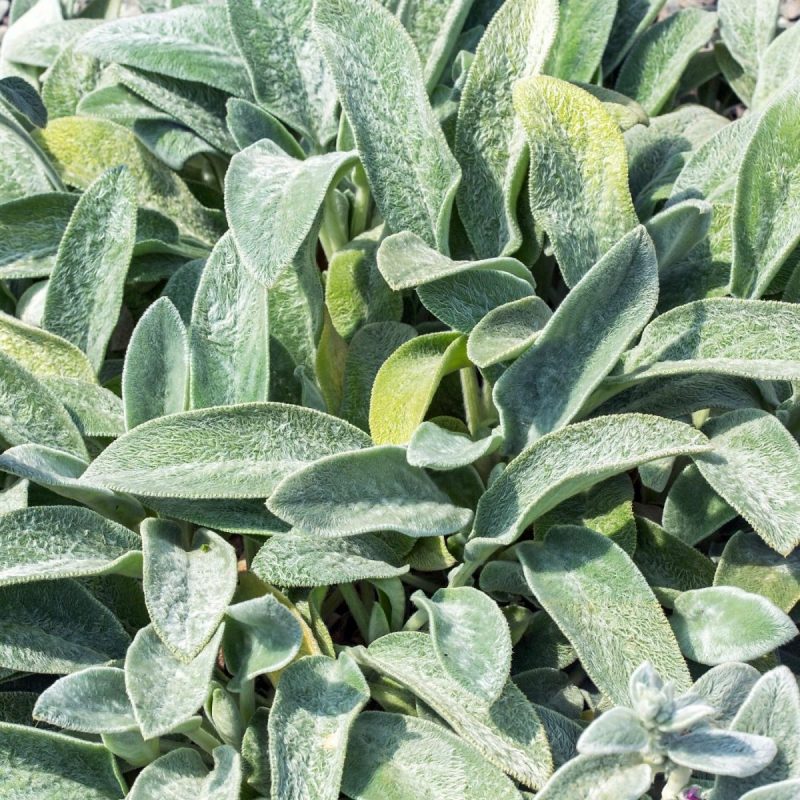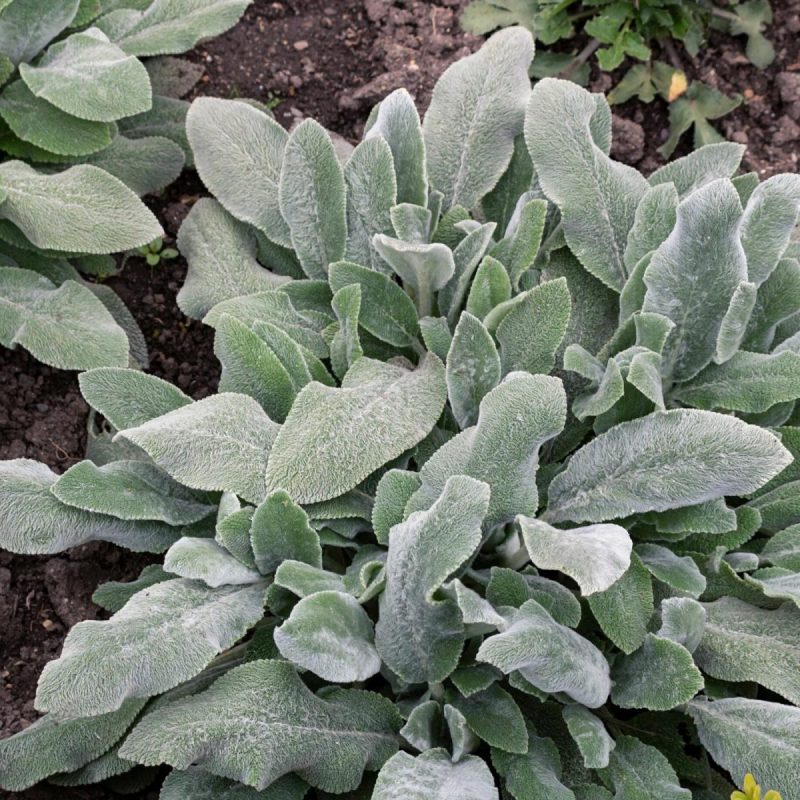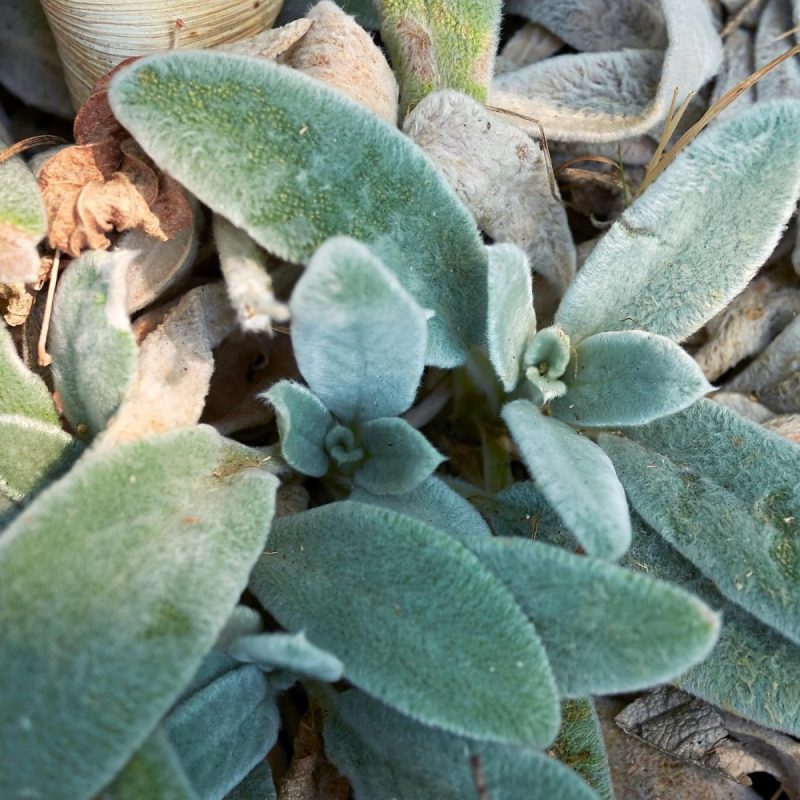Lamb’s-ear, planting guide and care work

Stachys byzantina, popularly called Lamb’s-ear, is a herbaceous, perennial plant that is part of the Lamiaceae family. It stands out for its silvery, tomentose leaves, while its drought-resistant perenniality, as well as its quick ability to cover the ground, make it ideal for the use in various landscaping projects (for example, rockeries). Although Stachys byzantina is grown more for the texture and color of the leaves, it can occasionally produce light purple flowers.
Lamb’s-ear – cultivars
Lamb’s-ear has many cultivars, among which the most popular are:
- ‘Big Ears’ or ‘Helen von Stein’: it stands out for its large leaves and good resistance to diseases, and for the fact that several years can pass before flowering;
- ‘Silver Carpet’: small cultivar, which does not bloom often. The size of this cultivar makes it suitable for ground cover;
- ‘Cotton Boll’: the name comes from the fluffy/woolly growths on the flower stalks, where flowers should appear, which often do not, but instead interesting formations similar to those of cotton form.



Environmental conditions
Light. In areas with a colder climate, it is recommended that this plant be grown in full sun, and in those with a warm climate, it can also be grown in partially shaded places. Excessive heat and dry conditions can cause leaf burns.
Temperature. Lamb’s-ear can tolerate various temperatures, but it does not prefer a humid climate, which makes it susceptible to leaf diseases. In mild climates it behaves like a plant with persistent leaves, and in the coldest periods it loses its leaves (during harsh winters), but these will grow again in the spring.
Soil. It prefers poor, well-drained soils with a slightly acidic pH. To improve water drainage, it is recommended to enrich the soil with organic matter before planting.
Lamb’s-ear – care
Watering. Lamb’s-ear is considered a drought-resistant plant, and watering is recommended when the soil is dry. It is recommended to avoid watering the leaves, as it can favor the occurrence of various phytopathogenic diseases. Although it is resistant to drought, during prolonged dry periods it loses its old leaves.
Fertilizing. As a rule, it does not require fertilizing because it prefers poor soils. However, in the spring, to stimulate growth, specific fertilizers can be used.
Recommended products
-
You can find products on a different store
Change Store -
You can find products on a different store
Change Store -
You can find products on a different store
Change Store -
You can find products on a different store
Change Store -
You can find products on a different store
Change Store -
You can find products on a different store
Change Store -
You can find products on a different store
Change Store -
You can find products on a different store
Change Store -
You can find products on a different store
Change Store -
You can find products on a different store
Change Store -
You can find products on a different store
Change Store -
You can find products on a different store
Change Store -
You can find products on a different store
Change Store -
You can find products on a different store
Change Store -
You can find products on a different store
Change Store -
You can find products on a different store
Change Store -
You can find products on a different store
Change Store -
You can find products on a different store
Change Store -
You can find products on a different store
Change Store -
You can find products on a different store
Change Store -
You can find products on a different store
Change Store -
You can find products on a different store
Change Store -
You can find products on a different store
Change Store -
You can find products on a different store
Change Store
Propagation. It can be propagated by dividing the bush (in spring) or by seeds (if it has produced flowers).
In the case of seed propagation, it is recommended that this be carried out in winter, approximately 8-10 weeks before the last frost. The seeds are spread on the surface of the substrate (moistened in advance), then gently pressed. They will not be covered with soil because they need light to germinate. The seeds can also be sown directly outdoors, if the danger of frost has passed and they need about 30 days to germinate.
Recommended products
-
You can find products on a different store
Change Store -
You can find products on a different store
Change Store -
You can find products on a different store
Change Store -
You can find products on a different store
Change Store -
You can find products on a different store
Change Store -
You can find products on a different store
Change Store -
You can find products on a different store
Change Store -
You can find products on a different store
Change Store -
You can find products on a different store
Change Store -
You can find products on a different store
Change Store -
You can find products on a different store
Change Store -
You can find products on a different store
Change Store -
You can find products on a different store
Change Store -
You can find products on a different store
Change Store -
You can find products on a different store
Change Store -
You can find products on a different store
Change Store -
You can find products on a different store
Change Store -
You can find products on a different store
Change Store -
You can find products on a different store
Change Store -
You can find products on a different store
Change Store -
You can find products on a different store
Change Store -
You can find products on a different store
Change Store -
You can find products on a different store
Change Store -
You can find products on a different store
Change Store
Dormancy. Lamb’s-ear survives the winter, and although the aerial part will die, in spring it resumes its vegetative growth. At the end of the vegetative growth period, it is recommended that the plant be cut to the ground level, because the remaining parts can rot and affect the health of the plant later.
Recommended products
-
You can find products on a different store
Change Store -
You can find products on a different store
Change Store -
You can find products on a different store
Change Store -
You can find products on a different store
Change Store -
You can find products on a different store
Change Store -
You can find products on a different store
Change Store -
You can find products on a different store
Change Store -
You can find products on a different store
Change Store -
You can find products on a different store
Change Store -
You can find products on a different store
Change Store -
You can find products on a different store
Change Store -
You can find products on a different store
Change Store -
You can find products on a different store
Change Store -
You can find products on a different store
Change Store -
You can find products on a different store
Change Store -
You can find products on a different store
Change Store -
You can find products on a different store
Change Store -
You can find products on a different store
Change Store -
You can find products on a different store
Change Store -
You can find products on a different store
Change Store -
You can find products on a different store
Change Store -
You can find products on a different store
Change Store -
You can find products on a different store
Change Store -
You can find products on a different store
Change Store
Potted plants – care. Lamb’s-ear is not usually grown in flowerpots, but in this case it is important that the pot has water drainage holes, and that the watering is carried out with a sufficient volume of water, avoiding excess as well as watering its foliage. Also, indoors, it is recommended to be placed in bright places, where it can benefit from direct sunlight 8 hours a day.
Diseases and pests
Due to the morphological characteristics of the leaves, Lamb’s-ear is not so prone to the attack of pests, but in conditions of high humidity and poor soil drainage, it is susceptible to the occurrence of foliar diseases. In the summer months, even if the soil provides good water drainage, if there is a high humidity, leaf spots may appear on the leaves or the plant may rot.
Additionally:
- The leaves at the base are susceptible to rot;
- As a rule, Lamb’s-ear does not bloom in the first year of vegetative growth.















































































































































































































































































































































































































































